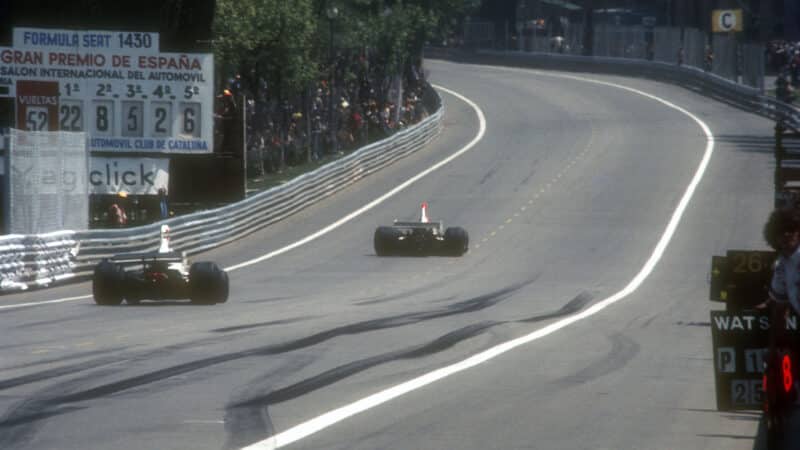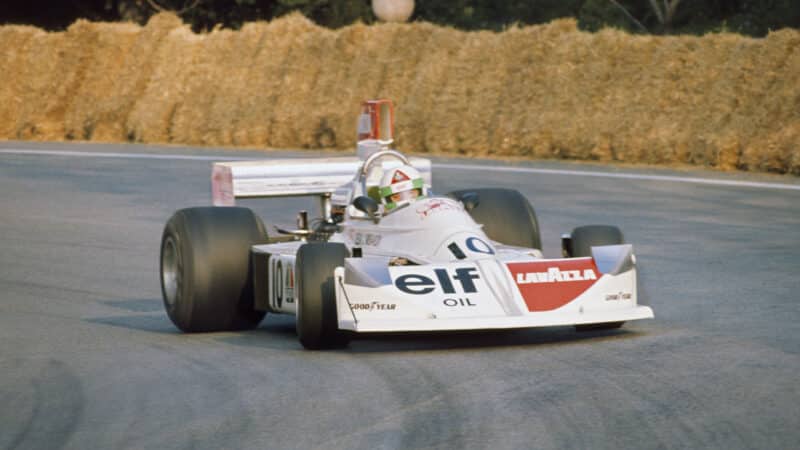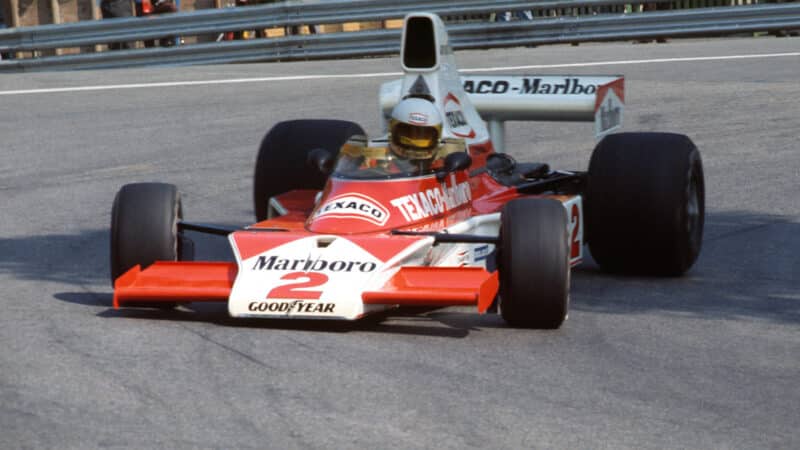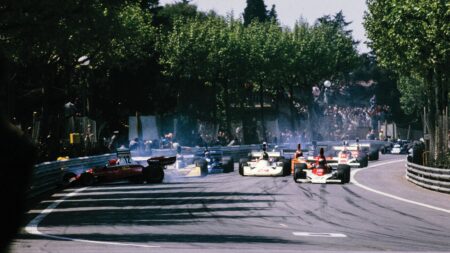Alan Jones (Hesketh), Tony Brise (Williams), and Roelof Wunderink (Ensign) all made their world championship-status F1 grand prix debuts at Montjuich in 1975 – but, no, that is also not what the race is most famous for. Neither is it most famous for Carlos Reutemann’s third place for Brabham, nor for Jean-Pierre Jarier’s one-minute penalty, without which he would have been classified third, which is the position in which his Shadow had been running prior to the truncation of the race.
So why was it stopped after just 29 laps, when it had been scheduled for 75? Well, there had been trouble from the get-go. On the Friday the leading lights of the Grand Prix Drivers’ Association had been angered by their discovery that various barriers that delineated the circuit had not been bolted together securely. They threatened a strike, and they duly boycotted free practice that day. To be precise, only Jacky Ickx (Lotus) and Vittorio Brambilla (March) did any running at all in FP1, and only Ickx again, Bob Evans (BRM), and Roelof Wunderink (Ensign) appeared in FP2.
Barrier repairs were effected overnight, enacted not only by the circuit staff but also by some of the teams’ mechanics – and even one team principal, Ken Tyrrell – and on Saturday morning the circuit was more or less ready. Quite a few of the top drivers were still unhappy with the lack of rigidity of some of the barriers, however, and in the end the organisers had to threaten them with legal action before they would all consent to take part in qualifying, which finally they all did, albeit some of them very reluctantly. Reigning world champion Emerson Fittipaldi was particularly angry about the situation, and as a result he drove just three quali-laps, all of them pointedly slowly, qualifying his McLaren 26th and last, his ‘fastest’ lap time a gargantuan 46.8sec slower than the pole time put up by Niki Lauda (Ferrari). But the race is not most famous for that either.

Drivers tried to boycott race due to sub-standard safety provisions
Grand Prix Photo
On race day Fittipaldi refused to take part, and by mid-morning he was already on a flight home to Lausanne, Switzerland. His elder brother, Wilson, drove just one lap in his home-grown Copersucar-Fittipaldi, then he peeled into the pits and parked it, as he had pledged that he would. Arturo Merzario (Williams) did likewise. In the first half-dozen laps Lauda, Patrick Depailler (Tyrrell), Mark Donohue (Penske), Jones, and James Hunt (Hesketh) all crashed out, as did Peterson and Tom Pryce (Shadow) not long after, and on lap 26 Rolf Stommelen (Hill) had a huge accident, causing Carlos Pace (Brabham) also to crash in his efforts to avoid Stommelen’s cartwheeling wreck, ending both their races on the spot. Stommelen’s car flew into one of the barriers about which there had been so much controversy, it careened over the top of it, and, before it had come to a stop, it had carved its way through four bystanders, killing them all: fire marshal Joaquín Benaches Morera, spectator Andrés Ruiz Villanova, and two photo-journalists, Mario de Roia and Antonio Font Bayarri. Stommelen broke a leg, a wrist, and some ribs. But – unbelievably – the race is not most famous for that either.
No, the 1975 Spanish Grand Prix is most famous for the fact that, finishing sixth after a trouble-free run that had attracted little attention while all the mayhem and tragedy chronicled above was taking place, Maria Grazia Lombardi, known always as Lella, the 34-year-old daughter of a butcher from Frugarolo, Piedmont, Italy, drove a Lavazza-sponsored March 751 to sixth place, thereby becoming the first and so far only female driver to record a points-paying position in a world championship-status F1 grand prix; or, rather, half a point, since only half-points were awarded at Montjuich in 1975 because less than 60% of the race distance had been completed.





